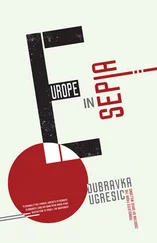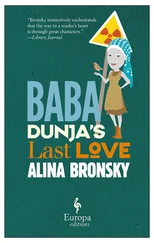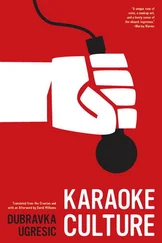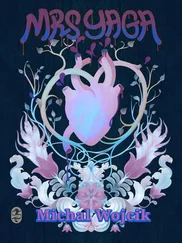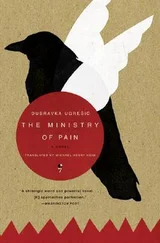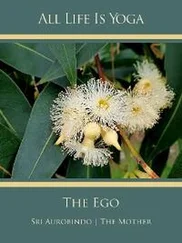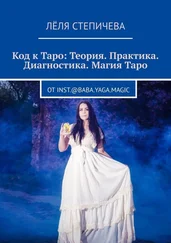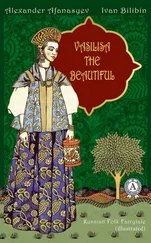Then that Dutchman, Quirijn van Brekelenkam, from the seventeenth century. In the background of his painting a young lute-player is sitting at a table, completely absorbed in his playing, while in front of him, in the foreground, a young woman is sitting, with a parrot on her finger. She sits straight as a rod, her left hand lies relaxed in her lap, which is covered with a long white apron, while on her right hand there is – a parrot. The parrot has gripped the woman’s finger with its claws and is looking at her, while the woman gazes at the lute-player. On the floor, beside the woman’s feet, there is a jug. It is unclear whether the woman is mesmerised by the parrot on her finger, the music she is hearing or its young performer.
And then Courbet. That painting of Courbet’s of a lascivious, naked woman’s body on a crumpled bed. The woman’s legs are partly open, her luxuriant brown hair is spread sumptuously over the bed. The woman is relaxed, exhausted, as though her passionate lover has just left the room. In the background is a stand for a parrot, with a water dish on the top and crossbars at the sides. While the woman is lying there, the parrot has left its observation post – its perch – and landed on its owner’s hand. The parrot has spread both its wings wide, as though it were in a state of total ecstasy. And again, a riddle. Perhaps there was no lover, perhaps the parrot is that perfect lover, a flying penis, the tool of the male painter’s imagination, which has satisfied the woman and is now spreading its wings in satisfaction.
In Delacroix’s painting, a naked beauty is sitting on a sofa, although it looks as though she is sitting on open bales of silk. One would not notice the parrot had the beauty not let her hand dangle, followed by her sleepy face with its half-closed eyes, towards the foot of the sofa, towards a parrot crouching in the dark shadows. The naked woman is evidently playing with the parrot and seems to be about to stroke the feathery crest on its head. And again, it is not clear: is the parrot a toy, a living vibrator, a substitute for a lover or is it the lover himself? Or could it be that the woman is playing with her own genitals, embodied in – a parrot.
Then Manet’s Woman with Parrot , painted in the same year as the Courbet! Olympia is dressed from head to foot in a peach-coloured habit almost as ascetic as a nun’s. On a tall perch is her companion, a grey parrot. The parrot has bowed its head, it seems despondent. Olympia is holding a small bunch of flowers, which she has moved a little away from her nose, or perhaps she is just about to smell them. Her gaze is directed straight at the observer. At the bottom of the parrot’s perch lies a large, half-peeled orange – the one licentious detail in the painting. Who is the parrot in the picture? The woman’s grey dejected genitals or her unsatisfied companion, whose rival is that ecstatic parrot in Courbet’s painting? Or are the two painters – Manet and Courbet – sending each other secret messages about the length of their respective penises?
And then Marcel Duchamp, who paints a woman in stockings – as Courbet does in one of his paintings! The woman’s legs are parted, but, unlike Courbet, Duchamp places his parrot unambiguously at the very entrance to the woman’s vagina.
Frida Kahlo also uses parrots as a decorative detail! In one picture she puts a green parrot on her shoulder, like a pirate; in another she paints herself with four parrots, one on each shoulder and two in her lap. And she is holding a cigarette at the same time.
And René Magritte? His painting is the portrait of a young woman with loose copper-red hair. The woman has a dress with a collar made of rich white lace. There is lace also at the end of her long sleeves, like gloves. The woman is standing beside a tree in which birds are perched. One bird with a luxuriant coppery crest and a long slender beak is particularly striking. The woman has picked up another bird with both hands and is eating it as though it were a ripe fig. We can see the bird’s dark red insides, its heart and liver, but surprisingly there isn’t a drop of blood! The lace collar and cuffs remain astonishingly white. The woman has a lascivious look on her face and the painting has the unambiguous title Pleasure .
Women and their enchantment with birds… Apart from bisexual Frida Kahlo, a woman who appears in the picture as a man with a moustache and a cigarette in her hand, the authors of this implicit eroto-ornithological debauchery are all men. And, were the women to be asked, their choice of favourite bird would certainly not be a parrot but – Superman! Is it a bird? Is it a plane…?
Beba was feeling somewhat faint from the slide show in her head and the aroma of the chocolate. So she got out of the bath and went to look for the shower. In passing she caught sight of her reflection in a mirror and gave a start. She looked like a gigantic chocolate owl.
‘What about your massage, madam?’ the woman in the white coat called after her.
‘We’ll leave the massage for another time,’ said Beba, getting into the shower. Instead of raising her spirits, the bath had had quite the opposite effect. Beba felt as though she had emerged from a whirlpool which had drained all her energy.
Hurrying to tell Pupa what that stupid ‘truffle’ was like, Beba nearly collided with Mr Shaker. Catching sight of an unappealing woman, spreading a disagreeable sweet smell round her, Mr Shaker scowled.
‘Have a nice lay,’ said Beba pleasantly.
Mr Shaker said nothing, just rolled his eyes and hurried on his way.
Heavens, what an unpleasant guy! thought Beba. Because Beba, knowing that Mr Shaker and Kukla were going to play golf that afternoon, had simply wanted to wish him a nice day.
What about us? We hasten on. While life mocks us, often seeming absurd, the tale flies on through the air – like a bird!
Yes, man has developed a terrific appetite for life. Since it became likely that no other life awaits him in the skies, man has decided to stay where he is for as long as possible, or in other words to chew the chewing gum of his life as lengthily as possible and amuse himself the while by blowing little bubbles. If the statistics are to be believed, the difference is truly impressive: at the beginning of the twentieth century the average lifespan was around forty-five years, in the middle of the century it had increased to sixty-six, while today, at the very beginning of the twenty-first century, the average age achieved is the fine figure of seventy-six. In the course of a mere hundred years, people have extended their life expectancy by nearly fifty per cent. Admittedly, this statistical boom has occurred in the more peaceful and richer parts of the world. Because in Africa people still die like flies, probably more quickly and effectively than ever before.
Dr Topolanek was sitting alone in the hotel lecture hall, thinking. A photograph of Joseph Vissarionovich Stalin was flickering on the projection screen. Today Dr Topolanek wanted to say something about the communist idea of longevity, but he had no one to say it to. The lecture hall was empty.
Yes, the communists were skilled. The new communist man had to live long, collectively and industriously, by the strength of his own will, rather than genetic inheritance. For inherit ance, even genetic, was not acknowledged. Illness, depression, suicide, physical weakness – that had all been dreamed up by the bourgeoisie, defeatists and deserters from the frontline of life. Belief in a better, hybrid tomorrow permeated all the pores of communist society. Michurin and Lysenko were concerned that what the communist masses might one day eat should be as good and abundant as possible. Later everyone laughed at them. And today everyone devours those gigantic smelly strawberries blown up with gas, but strangely no one laughs any more, nor does anyone ask any questions. Not to mention those white Dutch aubergines, which seem to have grown up in Michurin’s garden! The famous Caucasian Nikolai Chapkovsky lived under communism and died at a hundred and forty-six. Centenarians sprang up in those days like mushrooms after rain, mainly in the Caucasus, their longevity confirming the idea that their countryman, Stalin, would live if not long, then forever. He did not live especially long, or forever. Alexander Bogomolets, the author of Extending Life , invented the famous serum named after him. The serum combined with regular transfusions was his recipe for rejuvenation. Everyone laughed at him too, later: it was all part of the megalomaniac communist delusion. Today clinics offering complete blood transfusions are springing up everywhere, but only those with deep pockets can indulge themselves in a change of blood. Serums too, somewhat more advanced, are on the daily menu of those who can afford them. Gerovital, a cream made from the placenta, could only have been invented under communism, when abortion was the most common means of contraception, and here the Romanian Ana Aslan should be acknowledged… Whether the cream really was made from placenta or not no one knows, but Charles de Gaulle, Pablo Picasso, Konrad Adenauer, Salvador Dali, Charlie Chaplin, John F. Kennedy, Omar Sharif and many others made a pilgrimage to Ana Aslan, and communism did not bother them in the slightest. Mankind has always been obsessed by death, immortality and longevity. Battles have always been waged on that territory, and they are still being waged today, that is where things were always liveliest. One vast army of people – in medicine, pharmaceuticals, cosmetics – serves another army which has taken on the task of living as long as possible and looking as good as possible. They are both firmly connected, like organ donors and their recipients.
Читать дальше

